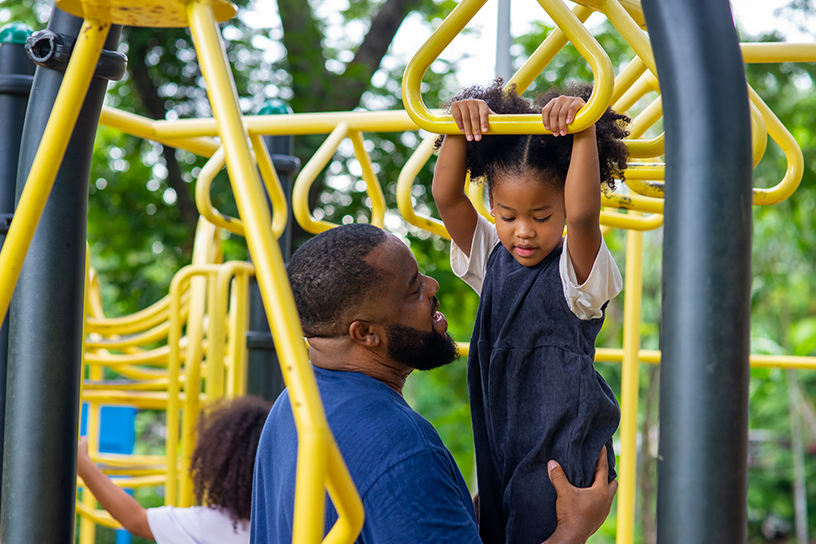When it comes to playground safety, most people immediately think of guardrails, age-appropriate equipment, or fall heights. But one of the most crucial, and often overlooked, components of a safe play environment lies right under your feet: the surfacing material.
At Playground Guardian, we understand that playground surfacing is far more than an aesthetic or maintenance decision. It’s a key factor in injury prevention, accessibility, and long-term durability. Let’s dive into why surfacing matters and how you can make the best choice for your playground.
Fall Protection: The #1 Safety Priority
Falls are the leading cause of nonfatal injuries on playgrounds, making proper surfacing a first line of defense. According to the Consumer Product Safety Commission (CPSC), nearly 70% of all playground injuries are caused by falls to the surface. That’s why federal guidelines require all playground surfaces to meet specific impact attenuation standards, ensuring they can adequately cushion a child’s fall.
The Triax 2010 Safety Impact Test, for example, simulates a child’s head during a fall to measure how much force is transferred to the brain. Surfaces that don’t meet these standards could lead to traumatic brain injuries or broken bones, even from relatively low heights.
Surfacing Options: Pros and Cons
Playground surfacing generally falls into two categories: unitary and loose-fill materials.
Loose-Fill Materials
These include engineered wood fiber (EWF), rubber mulch, and pea gravel. Loose-fill materials are often more affordable up front and provide solid fall protection when properly maintained.
Pros:
- Budget-friendly
- Natural appearance (especially EWF)
- Good shock absorption
Cons:
- Requires regular raking and topping off
- Can be displaced, exposing hard sublayers
- Not ideal for wheelchair accessibility
Unitary Materials
Unitary surfacing includes poured-in-place rubber, bonded rubber, rubber tiles, and synthetic turf. These surfaces offer a more consistent level of protection and are easier to maintain.
Pros:
- Excellent accessibility (ADA compliant)
- Low maintenance over time
- Long-lasting and durable
Cons:
- Higher initial cost
- It can be hot in sunny climates
- Installation must be done professionally
Accessibility and Inclusion
A playground should be welcoming and accessible for all children, including those with disabilities. Surfacing materials play a major role in ADA (Americans with Disabilities Act) compliance. Unitary surfaces like rubber tiles or poured-in-place rubber offer the best mobility support for wheelchairs, walkers, and strollers, ensuring everyone has equal access to play.
Loose-fill materials can also meet ADA requirements, but only if properly maintained and installed at an adequate depth. Without routine care, paths can become uneven or impassable.
Maintenance Matters
Even the best surfacing materials can become unsafe if not routinely inspected and maintained. Displaced mulch, compacted wood fiber, or cracking rubber can all pose tripping hazards or fail to meet fall-height standards.
That’s why Playground Guardian offers professional surface inspections, impact testing, and maintenance plans. Our team uses the latest tools to measure compliance and identify potential risks before injuries occur. With regularly scheduled inspections, you can protect your investment and, most importantly, the children who use it.
Final Thoughts
Choosing the right playground surfacing isn’t just a box to check during the design phase; it’s a long-term decision that affects safety, usability, and community satisfaction. Whether you're a school administrator, park director, or community leader, understanding your surfacing options and their impact is key to creating a fun, safe, and inclusive environment.
Let Playground Guardian help you ensure your playground surface is up to the highest safety standards. Because when children play, they deserve a foundation that’s built with care.





